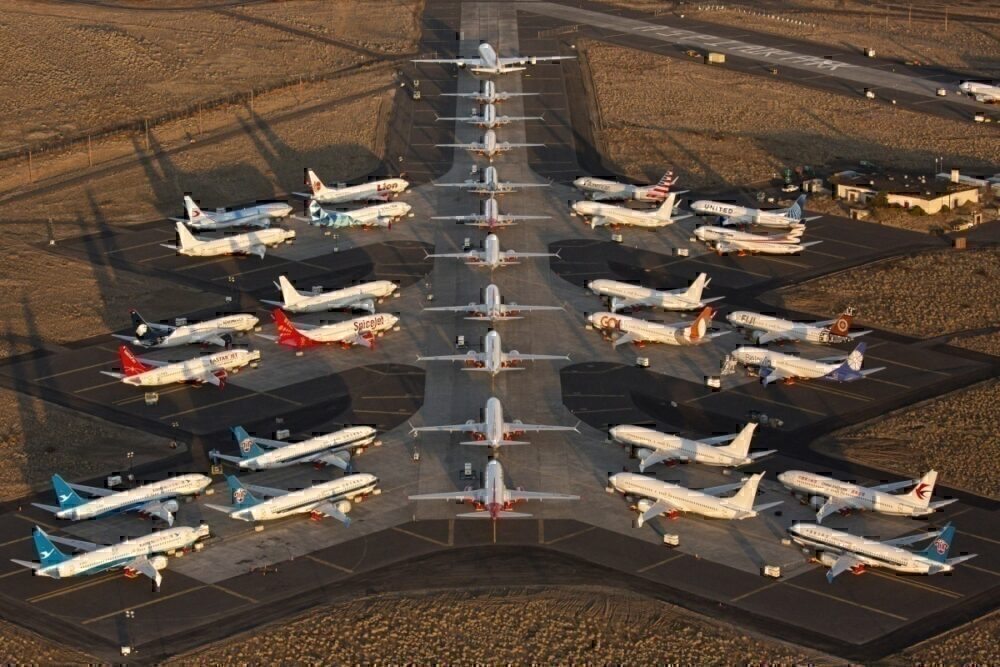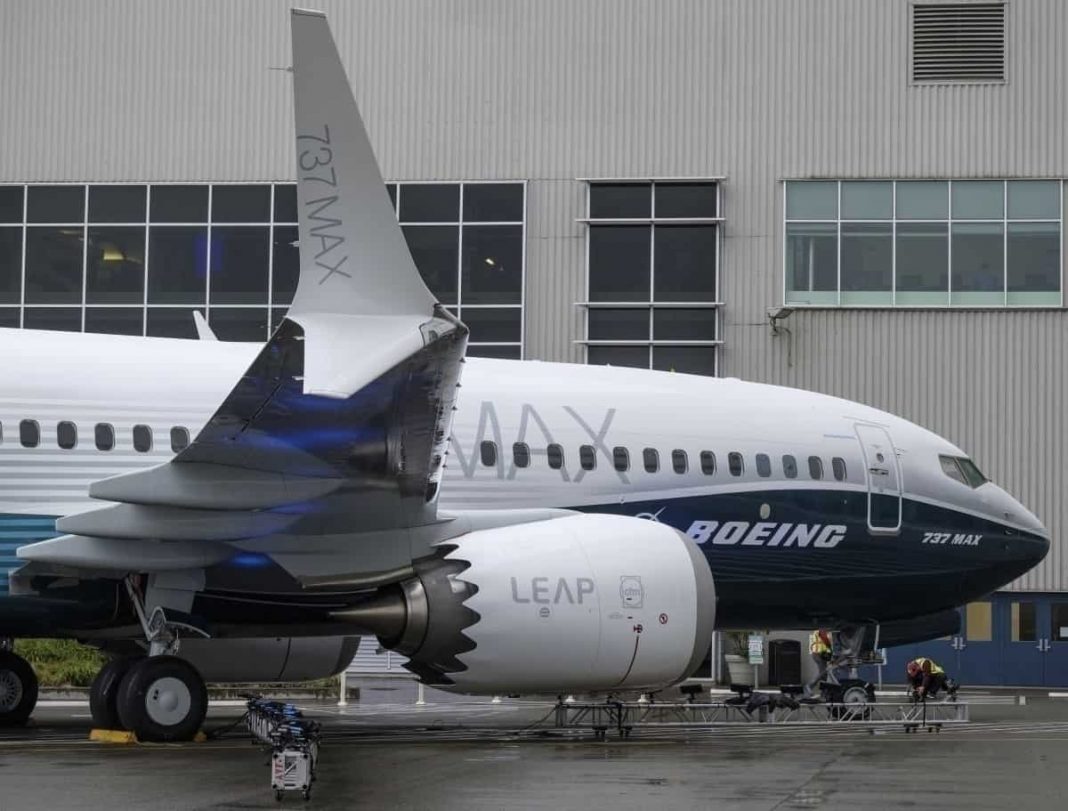The Federal Aviation Administration (FAA) has released a notice of proposed rulemaking (NPRM) for an airworthiness directive on the Boeing 737 MAX. This is one step in the FAA’s process, moving the type closer to recertification.

The NPRM
The notice of proposed rulemaking is a draft airworthiness directive (AD) that is open for public comment. The comment period on the proposed AD closes on September 21st. This proposed AD is designed to supersede a previous FAA AD and cover all Boeing 737 MAX aircraft.
The proposed AD would require Boeing 737 MAX aircraft to be installed with a new flight control computer (FCC) software, a revision to the existing Airplane Flight Manual (AFM) that includes new and revised flightcrew procedures, the installation of a new MAX display system (MDS) software, a change to the horizontal stabilizer trim wire routing installations, an angle of attack (AOA) sensor system test, and operational readiness flights.

Updated FCC software
The FAA indicated that the updated FCC software with revised flight control laws would help ensure that a single AOA sensor that fails and sends erroneous data does not generate a Maneuvering Characteristics Augmentation System (MCAS) activation.
According to the FAA, the updated software would also compare data from the two AOA sensors and detect a failed AOA sensor. If the difference between the sensor inputs is above a calculated threshold, then the FCC would disable the speed trim system (STS)– which also includes the MCAS system– for the rest of the flight. There would also be a corresponding indication of this deactivation on the flight deck.

The revised flight control laws would only permit one activation of the MCAS system per sensed high AOA event. With this in place, MCAS would not activate until after the airplane returns to a low AOA state– below the threshold of MCAS activation.
Even with MCAS activated, the magnitude of any MCAS command to move the horizontal stabilizer would be limited by the updated FCC software. The final horizontal stabilizer position after MCAS activation is expected to preserve the ability of the crew to control the pitch of the jet using the control column.
Updated MAX display system software
An additional software update will alert the crew on any disagreements between two AOA sensors. The updated MDS software would add a new “AOA DISAGREE” alert on all 737 MAX airplanes. Not all 737 MAX aircraft are outfitted with this alert feature.

The FAA notes the lack of an alert feature is not an unsafe condition itself. However, the mandate is designed to provide the greatest amount of information to the flight crew to guide safe action in the case of any inflight incidents.
Airplane Flight Manual revision
A revision and addition of specific operating procedures (or checklists) to the AFM are designed to facilitate a crew’s ability to recognize and appropriately respond to undesired horizontal stabilizer movement. These changes will require the FAA to conduct an operational evaluation before they are finalized.
When the crew suspects that airspeed indications are unreliable, the crew will turn to an updated checklist. The new checklist will add a step to let the crew determine a reliable airspeed indication without the need for reference tables. In addition, the FAA proposes an improved go-around procedure to allow for the increased use of automation. And, lastly, another step to ensure erroneous altitude information is not transmitted via the transponder to air traffic control (ATC).

The runaway stabilizer checklist will also be revised. In particular, the FAA proposes a revision to the criteria for this checklist’s use to include when uncommanded horizontal stabilizer movement occurs continuously or in a manner that is inappropriate for current flight conditions.
In addition, the revised checklist would include an explicit recall item. That recall item instructs the pilots to use their thumb-actuated trim switch to reduce forces on the control column. In addition, the checklist includes a recall item to use the control column and thrust levers to control the plane’s pitch attitude and airspeed. Lastly, the updated checklist would consist of a reference item to manually trim the horizontal stabilizer for pitch control.

The next checklist item that would be revised would be the stabilizer trim inoperative checklist. The goal of this revision is to better align this checklist with other non-normal checklists with a modification to give pilots guidance on manually trimming the stabilizer for pitch control.
Another checklist the FAA wants to add is the stabilizer out of trim checklist. This would be used when the autopilot does not set the horizontal stabilizer trim correctly. If the aircraft is on the ground, the checklist will instruct the crew not to take off if the “STAB OUT OF TRIM” light is engaged.
The FAA wants to also ad an AOA Disagree checklist if there is an alert. Also, there is the proposed ALT DISAGREE checklist if there are any alerts showing disagreement in altitude. The checklist would provide steps for the aircraft to land safely. The last checklist would also be an IAS disagree checklist for when there is a disagreement in indicated airspeed.
Training for pilots
The FAA is going to conduct an operational evaluation that will assess the impact of proposed aircraft design changes on pilot training. This evaluation will be held jointly with regulatory agencies from Brazil, Canada, and Europe.

How much would it cost?
The FAA released an estimate of how much the proposed AD will cost. The AD affects 73 airplanes registered in the US, and here is what the FAA estimates it will cost US operators:
- FCC OPS installation and verification: $6,205
- AFM revisions: $6,205
- MDS installation and verification: $6,205
- Stabilizer wiring change: $766,865
- AOA senos system test: $248,200
Some or all of the costs will likely be covered under warranty, reducing the cost impact on operators.

So what does this mean for the MAX?
The public comment period will close on September 21st. Only after then will the 737 MAX likely be recertified. There are still plenty of other procedures left for the FAA and other regulatory agencies to take care of.
The proposed AD outlines a decent amount of work that has to be done on the MAX planes before they return to service. The FAA has not finalized the AD, and there will likely be a few changes to this AD before it becomes final. Once it is final, airlines, Boeing, and engineers will get to work, making the requisite changes to get the MAX back into service.

The MAX recertification is still a ways away. For one, the FAA still needs to conduct additional operational evaluations and finalize the changes. Once that is done, the plane will move closer to recertification and passenger operations.
Based on the work that has to be done per this AD and the procedures the FAA still has to undertake, there are at least a few months until the MAX returns to commercial service– most likely in line with predictions of a fourth quarter review.
What do you make of the FAA’s proposed AD for the 737 MAX? Let us know in the comments!
[ad_2]
Source link


